
by Ray Bodrey | Apr 20, 2021

Scott Jackson, UF/IFAS Extension Bay County & Florida Sea Grant
Ray Bodrey, UF/IFAS Extension Gulf County & Florida Sea Grant
Erik Lovestrand, UF/IFAS Extension Franklin County & Florida Sea Grant
Can you remember where you were one year ago last April? The uncertainty of each day seemed to go on forever. At this time last year, we were planning several education programs that eventually had to be canceled or migrated to online events. Scallop Sitters was one of our cooperative volunteer programs with Florida Fish and Wildlife (FWC) that was postponed during the pandemic in 2020. Thankfully, FWC biologists continued restoration work last year in the region with good results and steps forward. However, there was something painfully absent in these efforts – you!
One of the lessons last year taught us, is to appreciate our opportunities – whether it is to be with your family, friends, or serve your community freely through volunteer service. Some new service opportunities appeared while others were placed on hold. Thankfully, we are excited to announce the Scallop Sitters Citizen Scientist Restoration Program is returning to our area in St. Andrew, St. Joe, and Apalachicola Bays this summer!
Historically, populations of bay scallops were in large numbers and able to support fisheries across many North Florida bays, including St Andrew Bay. Consecutive years of poor environmental conditions, habitat loss, and general “bad luck” resulted in poor annual scallop production and caused the scallop fishery to close. Bay scallops are a short-lived species growing from babies to spawning adults and dying in about a year. Populations can recover quickly when growing conditions are good and can be decimated when conditions are bad.
An opportunity to jump start restoration of North Florida’s bay scallops came in 2011. Using funding as a result of the Deepwater Horizon Oil Spill, a multi-county scallop restoration program was proposed and eventually established in 2016. Scientists with FWC use hatchery reared scallops obtained from parents or broodstock from local bays to grow them in mass to help increase the number of spawning adults near critical seagrass habitat.
FWC also created another program where volunteers can help with restoration called “Scallop Sitters” in 2018 and invited UF/IFAS Extension to help manage the volunteer portion of the program in 2019 which led to targeted efforts in Gulf and Bay Counties.
After a year’s hiatus, UF/IFAS Extension is partnering with FWC again in Bay and Gulf Counties and expanding the program into Franklin County. Despite initial challenges with rainfall, stormwater runoff, and low salinity, our Scallop Sitter volunteers have provided valuable information to researchers and restoration efforts, especially in these beginning years of the program.
Volunteers manage predator exclusion cages of scallops, which are either placed in the bay or by a dock. The cages provide a safe environment for the scallops to live and reproduce, and in turn repopulate the bays. Volunteers make monthly visits from June until January to their assigned cages where they clean scallops removing attached barnacles and other potential problem organisms. Scallop Sitters monitor the mortality rate and collect salinity data which determines restoration goals and success in targeted areas.
You are invited! Become a Scallop Sitter
1.Register on Eventbrite
2.Take the Pre-Survey (link will be sent to your email address upon Eventbrite Registration)
3.View a Virtual Workshop in May
4.Attend a Zoom virtual Q & A session in May or June with multiple dates / times available
5.Pick up supplies & scallops on June 17 with an alternate pick-up date to be announced
UF/IFAS Extension is an Equal Opportunity Institution.
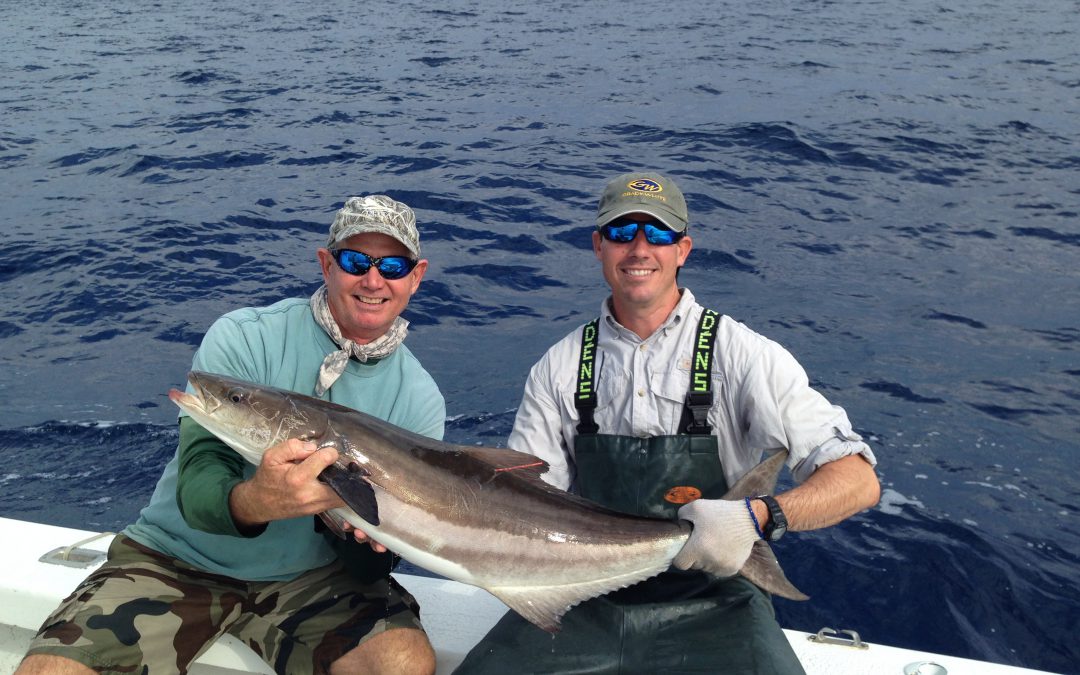
by Erik Lovestrand | Mar 11, 2021
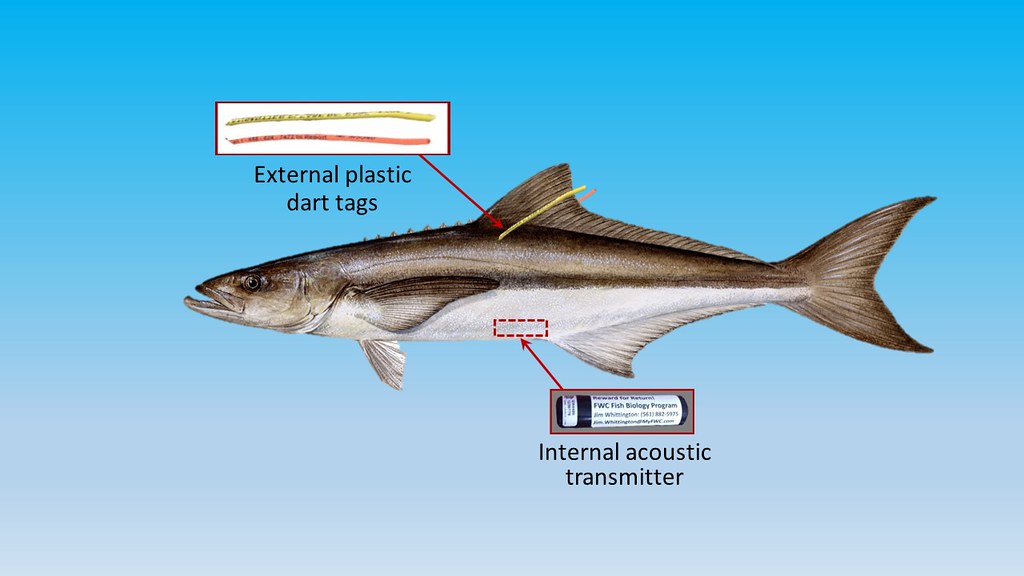
Cobia Researchers use Transmitters as well as Tags to Gather Data on Migratory Patterns
I must admit to having very limited personal experience with Cobia, having caught one sub-legal fish to-date. However, that does not diminish my fascination with the fish, particularly since I ran across a 2019 report from the Gulf States Marine Fisheries Commission titled “Management Profile for Gulf of Mexico Cobia.” This 182-page report is definitely not a quick read and I have thus far only scratched the surface by digging into a few chapters that caught my interest. Nevertheless, it is so full of detailed life history, biology and everything else “Cobia” that it is definitely worth a look. This posting will highlight some of the fascinating aspects of Cobia and why the species is so highly prized by so many people.
Cobia (Rachycentron canadum) are the sole species in the fish family Rachycentridae. They occur worldwide in most tropical and subtropical oceans but in Florida waters, we actually have two different groups. The Atlantic stock ranges along the Eastern U.S. from Florida to New York and the Gulf stock ranges From Florida to Texas. The Florida Keys appear to be a mixing zone of sorts where Cobia from both stocks go in the winter. As waters warm in the spring, these fish head northward up the Atlantic and Gulf coasts of Florida. The Northern Gulf coast is especially important as a spawning ground for the Gulf stock. There may even be some sub-populations within the Gulf stock, as tagged fish from the Texas coast were rarely caught going eastward. There also appears to be a group that overwinters in the offshore waters of the Northern Gulf, not making the annual trip to the Keys. My brief summary here regarding seasonal movement is most assuredly an over-simplification and scientists agree more recapture data is needed to understand various Cobia stock movements and boundaries.
Worldwide, the practice of Cobia aquaculture has exploded since the early 2000’s, with China taking the lead on production. Most operations complete their grow-out to market size in ponds or pens in nearshore waters. Due to their incredible growth rate, Cobia are an exceptional candidate for aquaculture. In the wild, fish can reach weights of 17 pounds and lengths of 23 inches in their first year. Aquaculture-raised fish tend to be shorter but heavier, comparatively. The U.S. is currently exploring rules for offshore aquaculture practices and cobia is a prime candidate for establishing this industry domestically.
Spawning takes place in the Northern Gulf from April through September. Male Cobia will reach sexual maturity at an amazing 1-2 years and females within 2-3 years. At maturity, they are able to spawn every 4-6 days throughout the spawning season. This prolific nature supports an average annual commercial harvest in the Gulf and East Florida of around 160,000 pounds. This is dwarfed by the recreational fishery, with 500,000 to 1,000,000 pounds harvested annually from the same region.
One of the Cobia’s unique features is that they are strongly attracted to structure, even if it is mobile. They are known to shadow large rays, sharks, whales, tarpon, and even sea turtles. This habit also makes them vulnerable to being caught around human-made FADs (Fish Aggregating Devices). Most large Cobia tournaments have banned the use of FADs during their events to recapture a more sporting aspect of Cobia fishing.
To wrap this up I’ll briefly recount an exciting, non-fish-catching, Cobia experience. My son and I were in about 35 feet of water off the Wakulla County coastline fishing near an old wreck. Nothing much was happening when I noticed a short fin breaking the water briefly, about 20 yards behind a bobber we had cast out with a dead pinfish under it. I had not seen this before and was unaware of what was about to happen. When the fish ate that bait and came tight on the line the rod luckily hung up on something in the bottom of the boat. As the reel’s drag system screamed, a Cobia that I gauged to be 4-5 feet long jumped clear out of the water about 40 yards from us. Needless to say, by the time we gained control of the rod it was too late; a heartbreaking missed opportunity. Every time we have been fishing since then, I just can’t stop looking for that short, pointed fin slicing towards one of our baits.
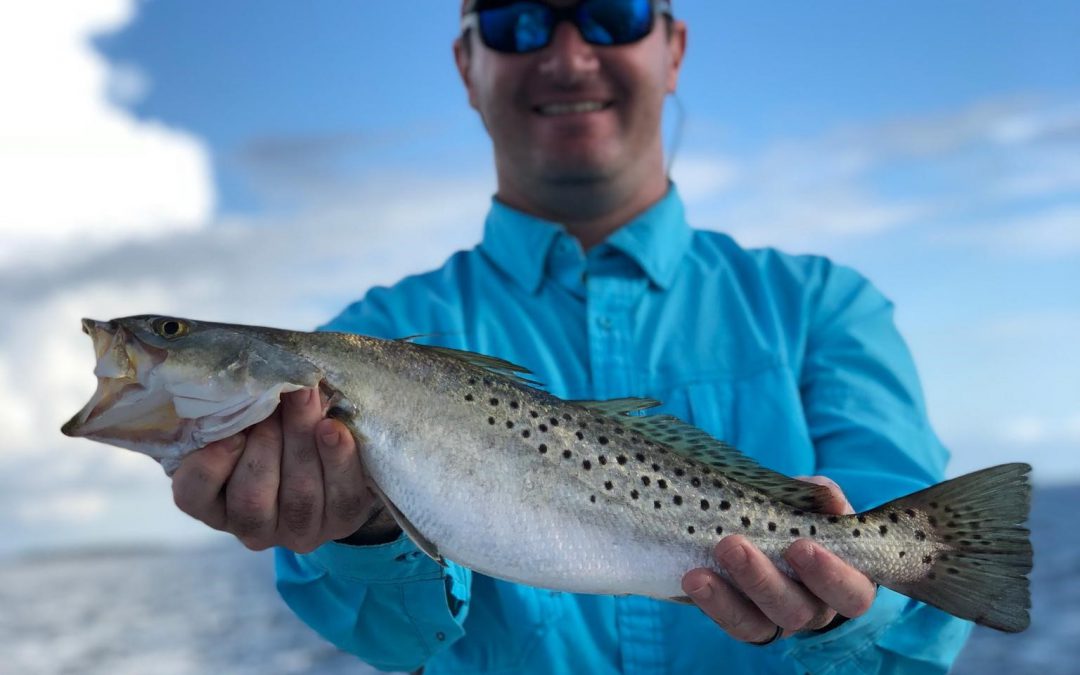
by Mark Mauldin | Feb 5, 2021
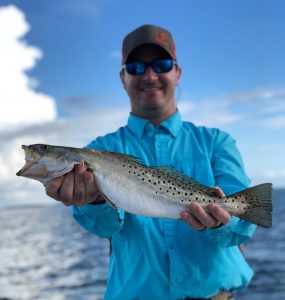
Reminder: Spotted seatrout harvest is closed in the Western Panhandle Management Zone the entire month of February.
New regulations were put into place last year reducing bag limits and closing harvest during February in the Western Panhandle Management Zone. For more details see my previous post on the subject.When Spotted Seatrout season is open (months other than February) in the Western Panhandle Management Zone the daily bag limit is 3 per harvester. Harvested Spotted Seatrout must be more than 15 inches long and less than 19 inches long. One fish, per vessel, over 19 inches my be included in the bag limit.
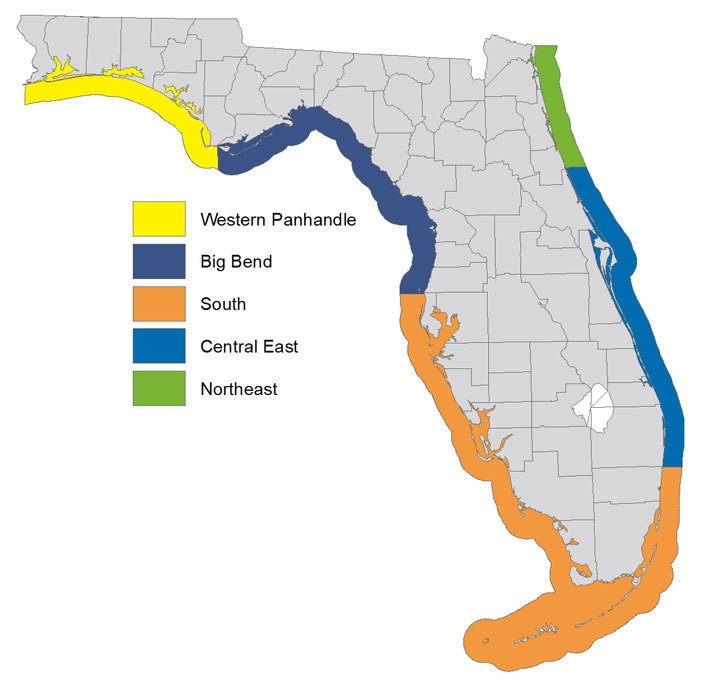
The Western Panhandle Spotted Seatrout Management Zone includes the State and federal waters of Escambia County through the portions of Gulf County west of longitude 85 degrees, 13.76 minutes but NOT including Indian Pass/Indian Lagoon.
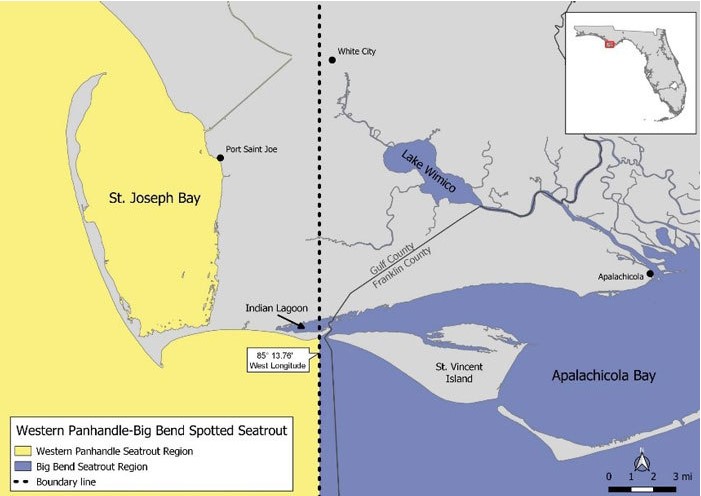
Boundary between the Western Panhandle and Big Bend spotted seatrout management zones.
Image source: www.myfwc.com
See myfwc.com for complete information on all game and fish regulations in Florida.

by Erik Lovestrand | Sep 25, 2020
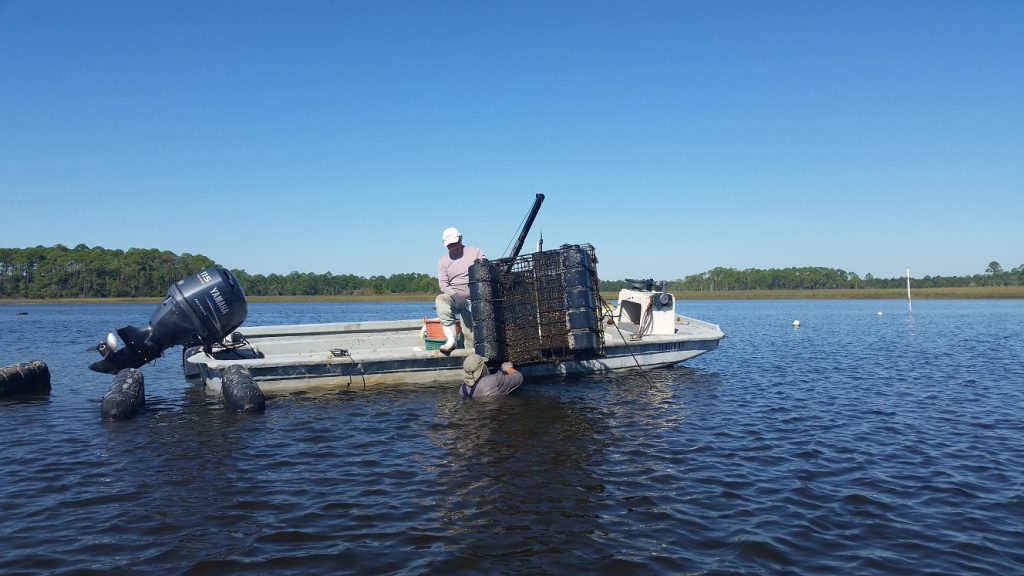
Hard work and perseverance are a must for oyster farmers.
On September 17, 2020, President Trump and US Secretary of Agriculture, Sonny Perdue, announced a second phase of an important program assisting America’s farmers. The Coronavirus Food Assistance Program (CFAP 1) was originally announced in April 2020 and now CFAP 2 will provide up to an additional $40 billion in support, along with adding more than 40 specialty crops not previously covered under CFAP 1.
This will be welcome news for many Panhandle farmers; particularly the ones that conduct their “chores” in our Panhandle bays and bayous by producing aquacultured oysters and clams. Losses in sales of molluscan shellfish were not covered under CFAP 1 because they were eligible for some assistance under the CARES Act (Coronavirus Aid, Relief, and Economic Security). However, many local growers were not able to qualify under the CARES Act for various reasons and are in serious need of assistance. When restaurants and bars were forced to close during the pandemic, sales of fresh oysters and clams basically came to a standstill overnight. Many creative efforts at direct marketing to customers and other avenues to move these time-sensitive products have been undertaken but sales are still far from what they were in 2019, leaving many growers with bills to pay and a significantly reduced bottom line.
Applications for CFAP 2 will be accepted by the USDA from September 21 through December 11, 2020. Payments will be based on 2019 sales, excepting new farmers who had no sales in 2019. Their calculations will be based on 2020 sales up to the point of application. The percent-payment-factor will be figured on a sliding scale, depending on amount of sales; ranging from 10.6% for sales below $50,000 to 8.8% for sales over $1 million.
The USDA has done a very good job of laying out information regarding the program on their website (here) and also provide assistance through their local Farm Service Agency offices around the state. Assistance with applications is available on line at this link. Two of the counties that have a significant and growing oyster aquaculture industry in the mid-Panhandle are Wakulla and Franklin. The FSA office for Wakulla County is in Monticello and can be called at (850) 997-2072 ext 2, or email Melissa Rodgers at melissa.rodgers@usda.gov. Growers in Franklin County can reach their FSA office in Blountstown at (850) 674-8388 ext 2, or email Brent Reitmeier at brent.reitmeier@usda.gov.
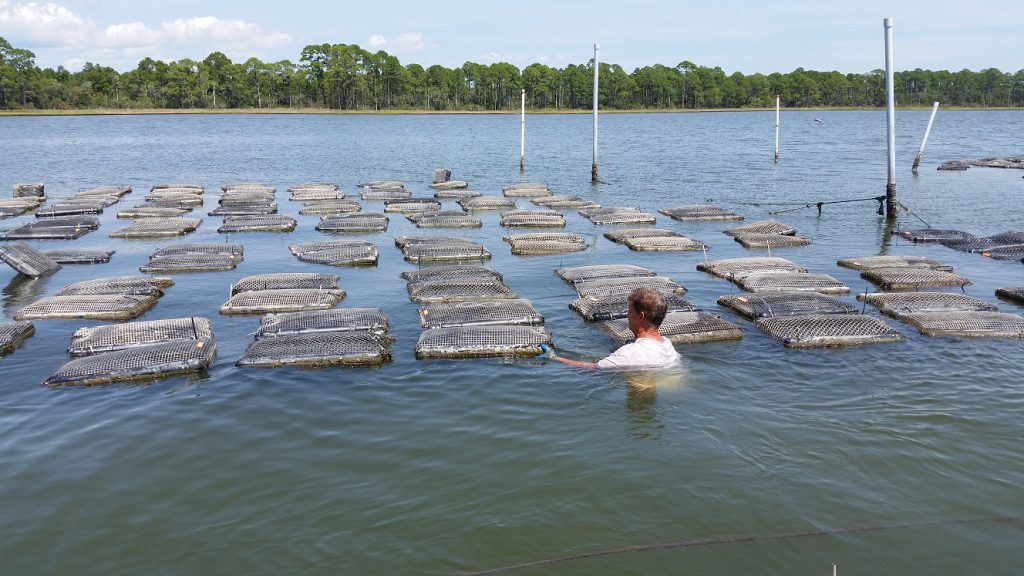
Growing oysters in floating bags requires getting wet, alot
With the plethora of confusing acronyms flying around in our present day, CFAP is one worth paying attention to. Why? Because it is providing targeted assistance to a segment of our US economy we should all stand behind. Agriculture is a critical component of all of our lives each and every day. If you have a chance to thank a farmer for what they do, or a legislator for moving this effort forward, or an industry support group that provided the data the legislator needed; don’t miss the opportunity. The hard-working men and woman who produce our food supply, including great, locally grown fresh seafood, deserve it.
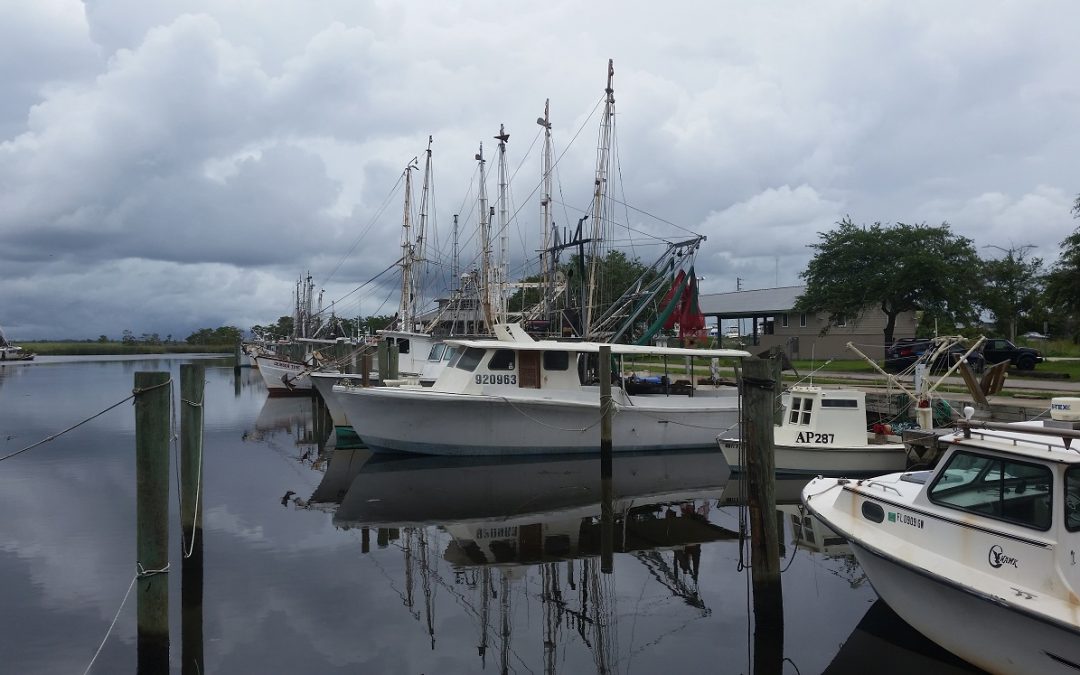
by Erik Lovestrand | Jul 31, 2020
We won’t see it tomorrow… but desperately needed funds for a hard-hit fishing industry are on the way. Congress has allocated $300 million in relief funds for losses suffered by various fishery-related businesses as a result of the COVID-19 pandemic. It comes as part of the $1.8 trillion CARES Act, which focuses on supporting businesses and individuals who have had financial losses during these difficult times.
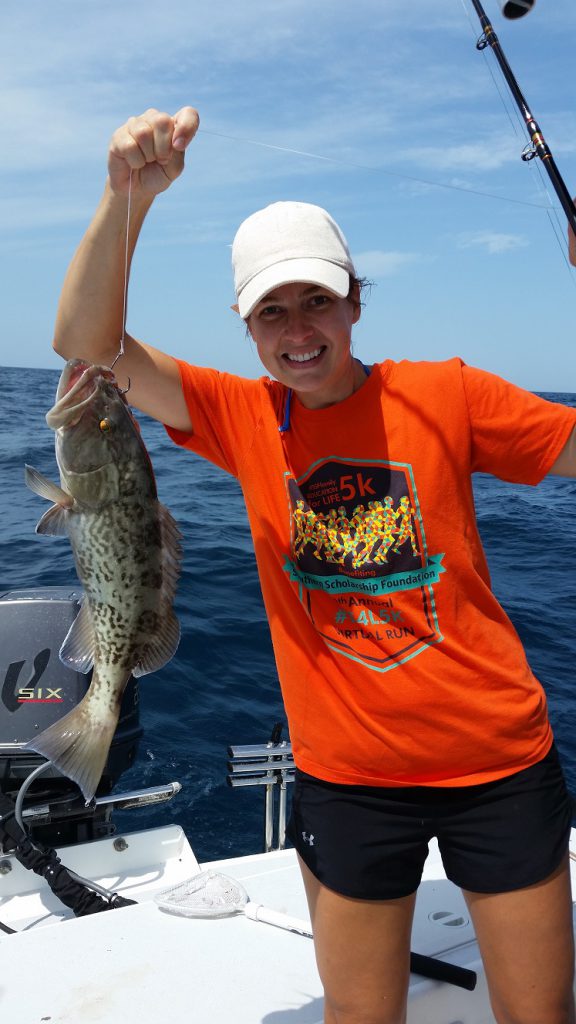
The Charter Fishing Industry was Impacted as People Stopped Travelling.
To allocate the Sec. 12005 funds, NOAA Fisheries used readily available multi-year averages to estimate the total average annual revenues from commercial fishing operations, aquaculture firms, the seafood supply chain (processors, dealers, wholesalers and distributors) and charter fishing businesses from each coastal state, Tribe, and territory. Florida’s share worked out to be $22.4 million for eligible applicants, which includes licensed commercial fishers, seafood wholesale dealers, charter fishing businesses, and aquaculture use certificate holders that are live-rock or bivalve producers. Applicants must be able to document at least a 35% loss of revenue between Jan-May 2020 as compared to the average of the previous five years during the same period.
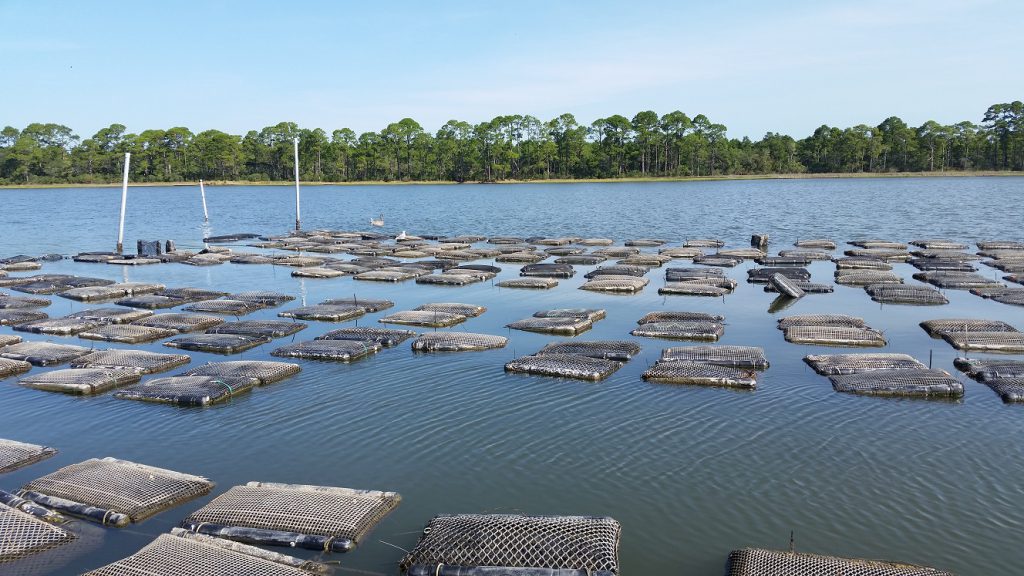
Oyster Farmers were Dramatically Impacted when Restaurants Closed.
The Florida Fish and Wildlife Conservation Commission received public input during July and will be submitting Florida’s plan for approval to NOAA in early August. After NOAA approval, the FWC will be administering the application and approval process, while the Atlantic States Marine Fisheries Commission will be sending checks directly to successful applicants. This supportive funding will be in the form of a grant and will not require repayment.
To see the FWC’s draft spending plan that will be going to NOAA click HERE. If you would like more information about the CARES Act and the FWC’s role in this effort please visit their website at this LINK. If you think you might be eligible for these funds, don’t wait for the 30 day application period to open (planned for October 2020) before doing your research on this relief funding. Go now to the FWC spending plan so you can begin preparing the documentation that will be required. With the impacts sustained from Hurricane Michael and now the virus, it is hard to imagine an industry sector in our Panhandle region that is more in need of help.
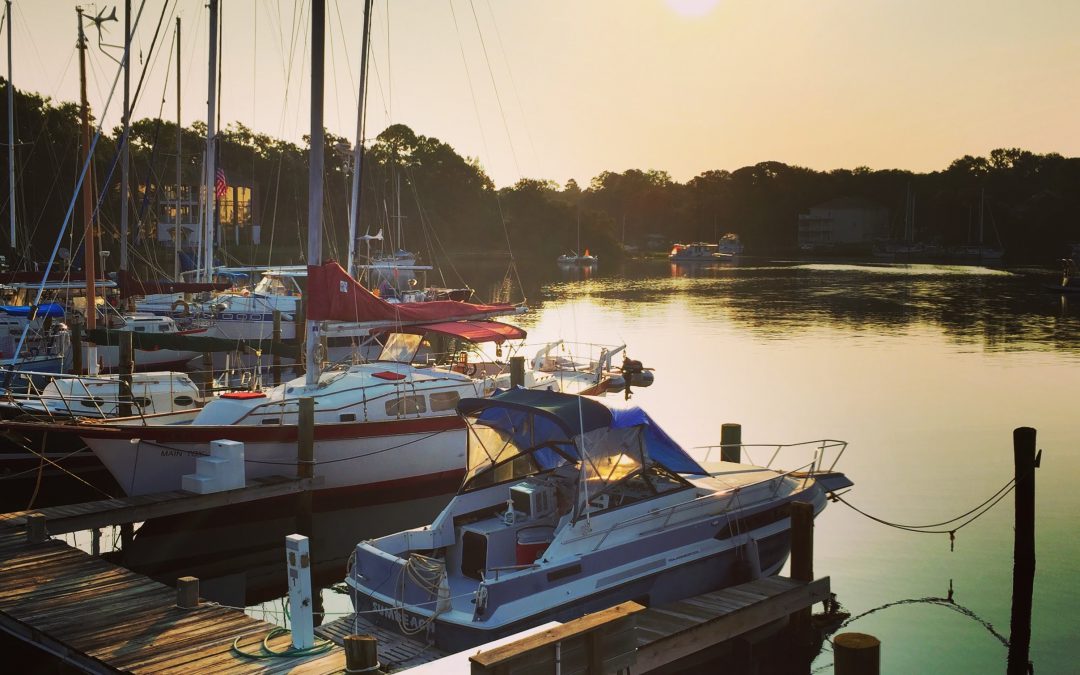
by Scott Jackson | Apr 17, 2020
Florida Sea Grant is maintaining a curated list of disaster assistance options for Florida’s coastal businesses disrupted by COVID-19.

Boats at calmly at rest in Massalina Bayou, Bay County, Florida.
The list contains links to details about well- and lesser-known options and includes “quick takeaway” overviews of each assistance program. Well-funded and widely available programs are prioritized on the list. The page also houses a collection of links to additional useful resources, including materials in Spanish.
“There is a lot of information floating around out there,” says Andrew Ropicki, Florida Sea Grant natural resources economist and one of the project leaders. “We are trying to provide a timely and accurate collection of resources that will be useful for Florida coastal businesses.”
Ropicki and others on the project team stress that the best place to start an application for disaster aid is to visit with your bank or lender and the Florida Small Business Development Center (SBDC). They also suggest contacting local representatives by telephone or email and not to just rely on internet-based applications.
Overview of Selected Disaster Assistance Programs Benefiting Florida Small Businesses including Agriculture, Aquaculture, and Fisheries (COVID-19)
The project team — which includes experts from Florida Sea Grant, University of Florida Institute of Food and Agricultural Sciences (UF/IFAS) Extension, and the UF/IFAS Center for Public Issues Education — reviews the page regularly for accuracy and to include new options.
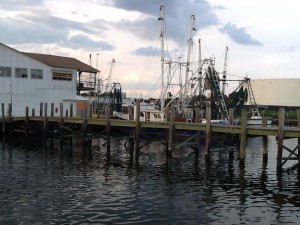
Commercial seafood is a large part of Florida’s economy and culture.
Photo: Rick O’Connor
“[I] really appreciate the outstanding work that you and FSG have done on consolidating the various types of aid available to fishermen due to the virus,” said Bill Kelly, executive director of the Florida Keys Commercial Fishermen’s Association, in a recent email. “I’ve been searching for a comprehensive listing and you just provided it.”
















